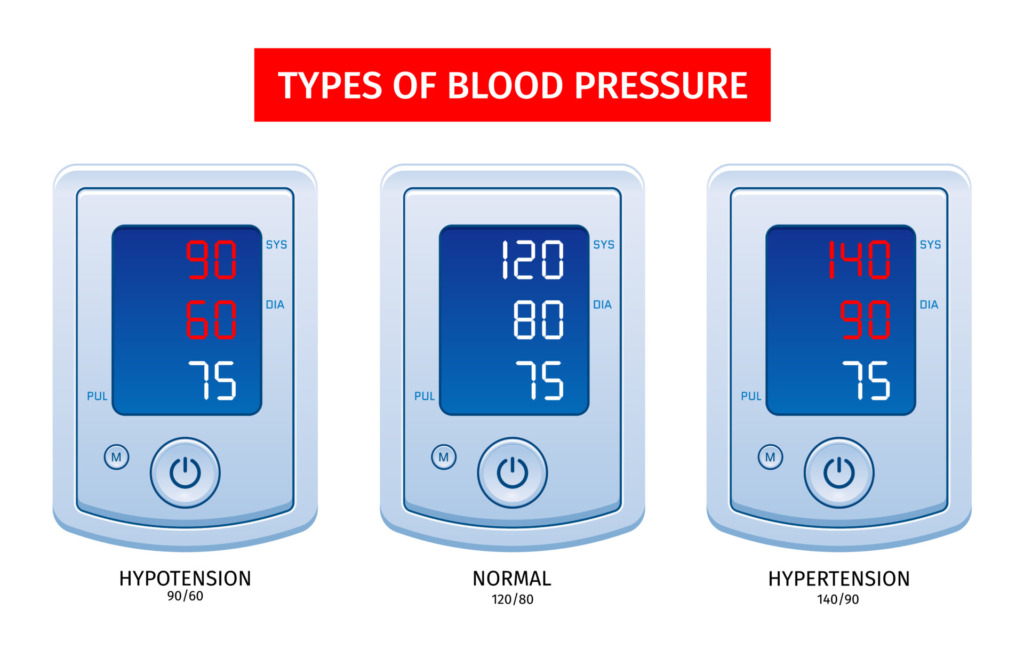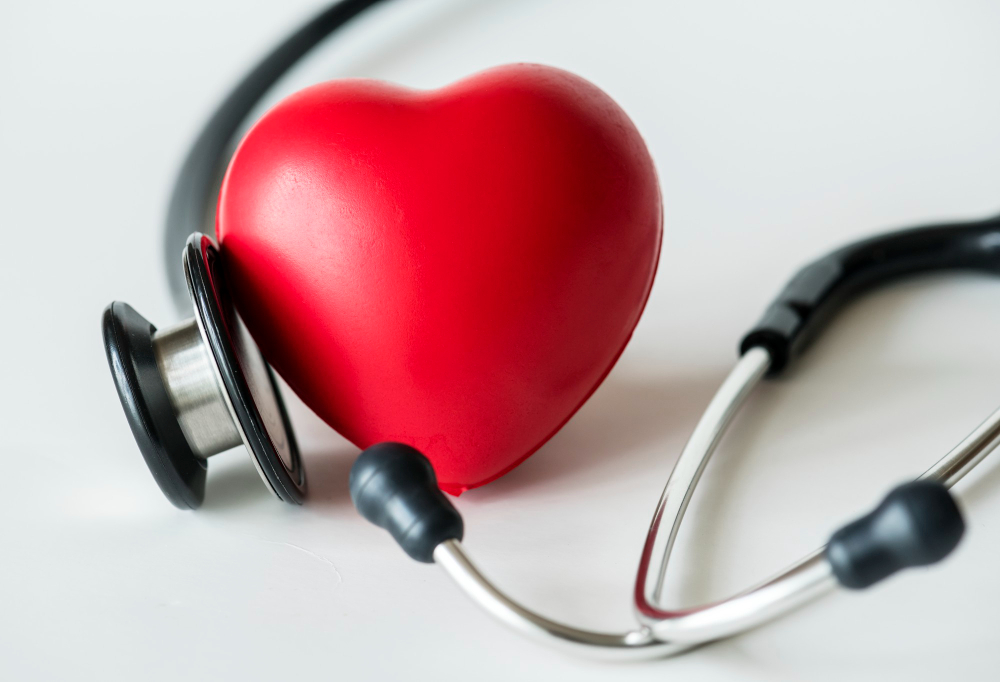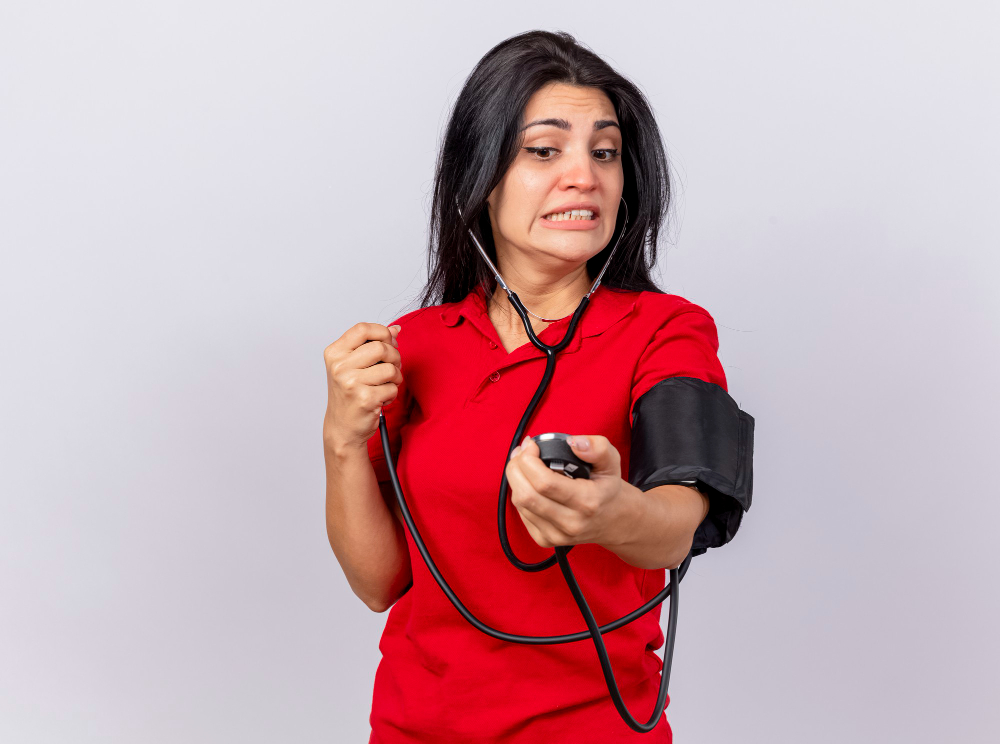Hypotension is the medical term for low blood pressure. When blood pressure is significantly lower than normal, low blood pressure occurs. This implies that there may not be enough blood flow to the heart, brain, and other organs. The typical range for normal blood pressure is 90/60 mmHg to 120/80 mmHg.
This article offers a comprehensive overview of low blood pressure symptoms. Read on as you learn more.
There are two numbers that show blood pressure: systolic pressure and diastolic pressure. They are recorded in millimeters of mercury (mmHg). The force used by the heart as it pumps blood into the arteries is measured by the systolic pressure, which is the first number. The second number, the diastolic pressure, indicates the force generated by the heart during its resting phase. Typically, normal blood pressure is 120/80 mmHg. Blood pressure is generally regarded as low when it drops below 90/60 mmHg, though this might vary based on a person’s health and symptoms.

Common Symptoms Of Low Blood Pressure
Hypotension, or low blood pressure, can cause a variety of symptoms, from minor discomfort to life-threatening conditions. The rate at which blood pressure decreases, the underlying cause of the hypotension, and the person’s general health are all important factors in determining the type and severity of symptoms. An extended examination of these symptoms can be found below.
- Lightheadedness and dizziness
Lightheadedness and dizziness are two of the most common signs of low blood pressure. These feelings usually appear when someone gets up too soon after sitting or sleeping. An abrupt shift in posture may result in a transient reduction in blood supply to the brain, producing dizziness or unsteadiness. Orthostatic hypotension is the term for this type of low blood pressure that occurs while an individual is upright. It may give you the impression that the room is spinning or that you could lose your equilibrium, which can be especially risky in scenarios where a fall could result in harm.
- Fainting (Syncope)
Syncope, or fainting, is a more serious sign of low blood pressure. It occurs when there is insufficient blood supply to the brain to support consciousness. This might happen unexpectedly, particularly in circumstances where blood pressure drops fast, like right after getting up quickly, when dehydrated, or right before a stressful event. Low blood pressure-induced fainting is a defense mechanism in which the body folds into a horizontal position to facilitate blood return to the brain.
- Tunnel or blurry vision
Vision problems like tunnel vision or impaired vision can also result from a quick drop in blood pressure. While tunnel vision narrows your field of vision and gives the impression that you are gazing through a tunnel, blurred vision makes it difficult to discern details or focus on objects. Because the eyes and the brain are both sensitive to fluctuations in blood flow, these visual complaints can arise. These temporary disruptions may result from the eyes not getting enough oxygen and nutrients when blood pressure falls.

- Fatigue
Prolonged hypotension may result in chronic exhaustion. The body’s organs and tissues might not get the oxygen and nutrients they require to function correctly if blood pressure is regularly low. This may cause you to feel generally exhausted, lethargic, and low on energy. Low blood pressure-related fatigue can be especially difficult to manage since it doesn’t always go better with rest and might affect everyday activities and general quality of life.
- Nausea
Another symptom that may be connected to low blood pressure is nausea. Dizziness and lightheadedness are sometimes accompanied by an uneasy or nauseous feeling in the stomach, especially when rising up rapidly or moving suddenly. The body reacts to an abrupt change in blood flow by causing nausea, which might interfere with the digestive system’s regular operation. This can occasionally result in vomiting, particularly if the nausea is severe or persistent.
- Cold, clammy skin
The body may react to a reduction in blood pressure by rerouting blood flow from less important organs, like the skin, to more necessary organs, such as the heart and brain. Skin that is pallid, clammy, or cold may result from this diversion. Skin that is cold and clammy frequently indicates that the body is severely hypotensing or in shock. As the body tries to maintain proper circulation, it can also be accompanied by perspiration and a sense of coldness, even in a warm environment.
- Shallow, quick breathing
In reaction to low blood pressure, the body may quicken breathing as a compensatory measure. Breathing swiftly and shallowly promotes faster oxygen circulation, but it can also cause dyspnea or hyperventilation. This kind of breathing is frequently observed in circumstances involving abrupt or severe hypotension, such as shock or following a fainting episode. Additionally, because the body is trying to adjust to the lower blood flow, it could worsen feelings of worry or anxiety.
- Difficulty or confusion focusing
Low blood pressure might make it harder to concentrate or induce confusion since the brain doesn’t receive enough blood flow. This may show up as a mental haze, difficulty concentrating, forgetfulness, or a general sense of being “out of it.” Severe occurrences of this symptom may worsen to the point of a transient loss of cognitive function, at which point the person may find it difficult to understand conversations, make decisions, or even recognize familiar persons or environments. This can be especially risky if it happens unexpectedly or when driving or in other circumstances where awareness is needed.
- Weakness
One common sign of low blood pressure is weakness in the muscles. Reduced blood flow to the muscles, which results in a loss of strength and energy, is frequently the cause of this weakness. People may experience limb heaviness or find it difficult to carry out daily duties requiring physical exertion. In extreme situations, this deficiency may render it impossible to walk, stand, or even hold objects.
Chronic low blood pressure can cause depression, however it is not common. This is especially true if persistent weakness, exhaustion, or other incapacitating symptoms interfere with day-to-day functioning due to the hypotension. Feelings of hopelessness or depression, together with a loss of interest in once-enjoyable activities, might result from the ongoing lack of energy and the physical symptoms of low blood pressure.
Complications of Low Blood Pressure
Although some individuals with low blood pressure might not show any symptoms, severe hypotension can cause serious problems, such as:
- Shock
A potentially fatal illness known as shock occurs when blood pressure falls so low that essential organs are not receiving enough blood. If left untreated, this can lead to multiple organ failure and even death. Shock can result from extreme blood loss, an allergic reaction, or a serious illness (septic shock, anaphylactic shock). Shock is frequently linked to severe hypotension.
- Accidents and Injury
Low blood pressure can cause fainting or dizziness, which can lead to falls and injuries such as sprains, fractures, or head trauma. This is especially alarming for the elderly, who may already have an increased risk of falls and injury.
- Organ Damage
Due to insufficient blood flow, prolonged low blood pressure can harm important organs like the heart, brain, and kidneys. Complications including heart failure, stroke, or chronic kidney disease may result from this over time. If organs don’t get enough blood for a long time, they are more likely to be damaged permanently.

Conclusion
It is important to fully understand low blood pressure symptoms and complications in order to diagnose and treat the illness. While some people may only have minor symptoms that don’t affect their day-to-day activities, others might have more serious problems that need to be attended to by a doctor. It’s crucial to consult a doctor if you encounter any low blood pressure symptoms in order to guarantee an accurate diagnosis and course of treatment.
FAQs About Symptoms of Low Blood Pressure
- Can low blood pressure cause migraines?
- Yes, low blood pressure can cause headaches, especially if it restricts blood flow to the brain. Headaches, on the other hand, are more often linked to high blood pressure.
- What should I do if low blood pressure is the cause of my dizziness?
- To avoid collapsing, sit down or lie down as soon as you feel lightheaded. You can improve blood flow to the heart and brain by elevating your legs. If the lightheadedness continues, consult a physician.
- Is fainting usually associated with low blood pressure?
- Numerous factors, such as low blood pressure, dehydration, cardiac issues, and vasovagal reactions, can cause fainting. It’s crucial to speak with a healthcare provider if you faint frequently.
- How can I treat low blood pressure symptoms at home?
- Eat small, regular meals, drink plenty of water, avoid abrupt position changes, and think about using compression stockings to help manage symptoms. See your physician for specific guidance.
- Is anxiety caused by low blood pressure?
- Indeed, for certain people, the symptoms of low blood pressure, like weakness, fast breathing, and dizziness, can cause anxiety or panic.
- If I have symptoms of low blood pressure, when should I consult a doctor?
- If you have ongoing symptoms like weakness, dizziness, fainting, or confusion, or if your low blood pressure is seriously impairing your everyday activities or causing you substantial discomfort, you should consult a physician.
- Can low blood pressure symptoms be brought on by particular medications?
- Yes, certain drugs, such as diuretics, beta-blockers, and antidepressants, can cause low blood pressure as a side effect. If you think your medicine is influencing your blood pressure, speak with your doctor.
- Do untreated symptoms of low blood pressure have any long-term effects?
- Chronic low blood pressure can cause consequences like organ damage, frequent fainting, and a diminished quality of life because of lingering symptoms if treatment is not received.
- Can symptoms of low blood pressure be mistaken for those of other illnesses?
- Indeed, a number of illnesses other than low blood pressure can also cause symptoms including weariness, confusion, and dizziness. To ascertain the reason behind your symptoms, it’s critical to have a correct diagnosis by a doctor.
- What lifestyle adjustments can help relieve the symptoms of low blood pressure?
- Adjusting your lifestyle to include more salt (if your doctor prescribes it), drinking enough of water, eating well-balanced meals, and abstaining from alcohol might help control symptoms. Depending on your situation, your doctor can issue you particular instructions.



